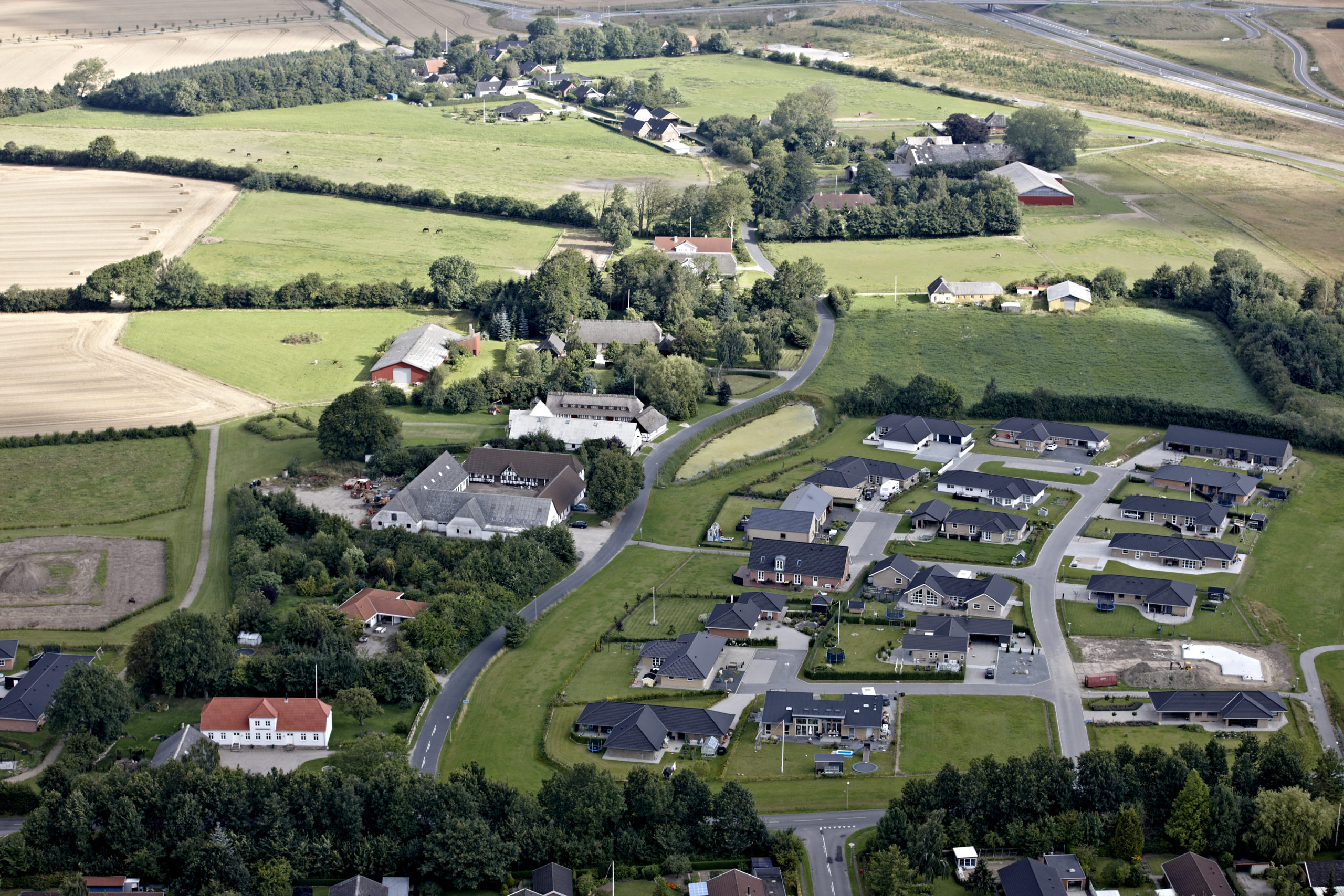Village formation and settlement structure in the 1st millennium is an interdisciplinary research project concerning the construction, development, and formation of extant villages on Funen.
The project is being carried out as a Ph.D. project in a collaboration between Odense City Museums and the University of Southern Denmark from 1.9.2013 to 30.8.2015. It is funded by a collaboration consisting of the Danish Agency for Culture, the University of Southern Denmark and Odense City Museums.

If you do not know it is there, it is impossible to see, but under the new detached houses and the beautiful firlængede farms (farms consisting of four long buildings around a yard) there are traces of the village, which dates back to the 7th century.
The project has basically addressed a number of classic complex problems found in studies of settlement history and has specifically investigated the scope of the theory of settlement history which, since around 1980, has dominated southern Scandinavian settlement archaeology and history – commonly referred to as the Vorbass model.
The purpose of the research project has been to prepare a revised and updated synthesis for the village and settlement development on Funen in the period from the Early Roman Iron Age to the Early Middle Ages. Particular focus was placed on the period of the Late Roman Iron Age to Early Viking Age (c. AD 175-950) and the establishment of the oldest extant villages.
Central to the project, was a settlement history exercise to locate and incorporate settlements from the Late Germanic Iron Age and Early Viking Age – the “dark ages” – into a newly organised synthesis for settlements, which relies on specific and well-founded archaeological material.
Likewise, it has been an ambition of the project to clarify to what extent and at what landscape organisational levels (e.g., arable or owner level) there can be talk of actual continuity and discontinuity between the prehistoric wandering settlements and the villages known from historical times.
The project illustrates that the basic settlement organisation which characterises Denmark to this day was established in the period around AD 600 and not, as previously assumed, during the transition between the Viking Age and the Middle Ages. At this time (c. AD 600) a comprehensive reorganisation of the settlements can be observed and it is the project’s hypothesis that these reorganisations are due to very basic organisational innovations based on the introduction of an obligation of weight, with regard to the provision of work, provision of military aid or the payment of taxes, imposed on the land rather than individuals.
As these are completely general societal-related complex problems and model developments, it is my hope that the project’s issues, analyses and results, in addition to being an independent work in the future, can be included in a wide range of research areas. Not only in focussed settlement history projects, but also in the continued exploration of the early kingdom formation processes of the Danes.
To increase the scale of the project, the results could be viewed within a Danish as well as southern Scandinavian framework of understanding. This is because a large number of the find patterns and settlement historical processes that are reflected through the archaeological sources from Funen seem to be found in other parts of southern Scandinavia and in particular in the Old Danish area. Through comparative parallel studies, the well-defined settlement concept from Funen will thus be able to function as an analogy to other southern Scandinavian regions. The precondition for this analogy formation is the very narrow temporal and geographical framework, as well as the fact that it is kept within specific geographical areas where the power-political structures can be described as generally uniform. Against this background, not only Funen but also Southern Scandinavia is perceived as the overall framework for understanding the results of the studies.

At Rynkeby on Midtfyn, the remains of settlements from the whole of the 1st millennium have been excavated. The map on the left shows traces of settlements dating to older Roman times. In the middle are settlements from the Late Roman Iron Age and Early Germanic times. To the right is the settlement as it has been from the Later Germanic Iron Age until today. This suggests that the theories of early village formation should be revised. The oldest existing villages are thus not founded around the year AD 1,000, but already exist in the 7th century!